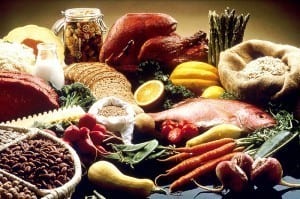
Foods like oatmeal, vegetables best for long-term weight loss
A low glycemic diet may be the best bet for weight loss, a recent study is saying.
The Harvard study found that a low glycemic diet was the best of the three most popular diets for maintaining metabolism during weight loss and maintaining cardiovascular health.
A low glycemic diet, often referred to as the GI diet, focuses on consuming unprocessed foods, complex carbs and food combining.
The diet, originally developed for diabetes patients to help regulate blood sugar, is commonly incorporated into popular diets, such as Nutrisystem, the Zone diet, South Beach and Sugar Busters.
A low glycemic diet consists of a specific calorie breakdown. Forty percent of total calories should ideally come from carbohydrates, 40 percent from fats and 20 percent from protein.
The way the low glycemic diet works is quite simple – it focuses on the way certain calories can affect blood sugar. Carbohydrates affect blood sugar in a different way than fats or protein, and not all carbohydrates are similar.
Carbohydrates are rated on the glycemic index, which measures them based on how they break down in the digestive system to form glucose, which enters every cell of the body.
The index scale is scored on a scale of 100; 100 represents pure glucose. Foods that break down more quickly get a higher score, while foods that break down slowly get a lower score.
Fruit juices, breads, starchy foods and baked goods rank as high glycemic foods.
Foods that are approved for a low glycemic diet include beans, vegetables and oatmeal, which have fat, fiber and protein and aid in steady digestion and longer periods of satiety.
Still, not everyone approves of the low glycemic diet, especially the USDA.
Their Dietary Guidelines For Americans stated that glycemic index diets “are not associated with body weight and do not lead to greater weight loss or better weight maintenance.”
Still, the main concepts are still applicable, dieticians are saying.
“I think a message of eating more whole grains, fruits, vegetables and high-fiber foods is a much better and easier measure to give people,” Dr. Xavier Pi-sunyer, director of the New York Obesity Nutrition Research Center told ABC News.















